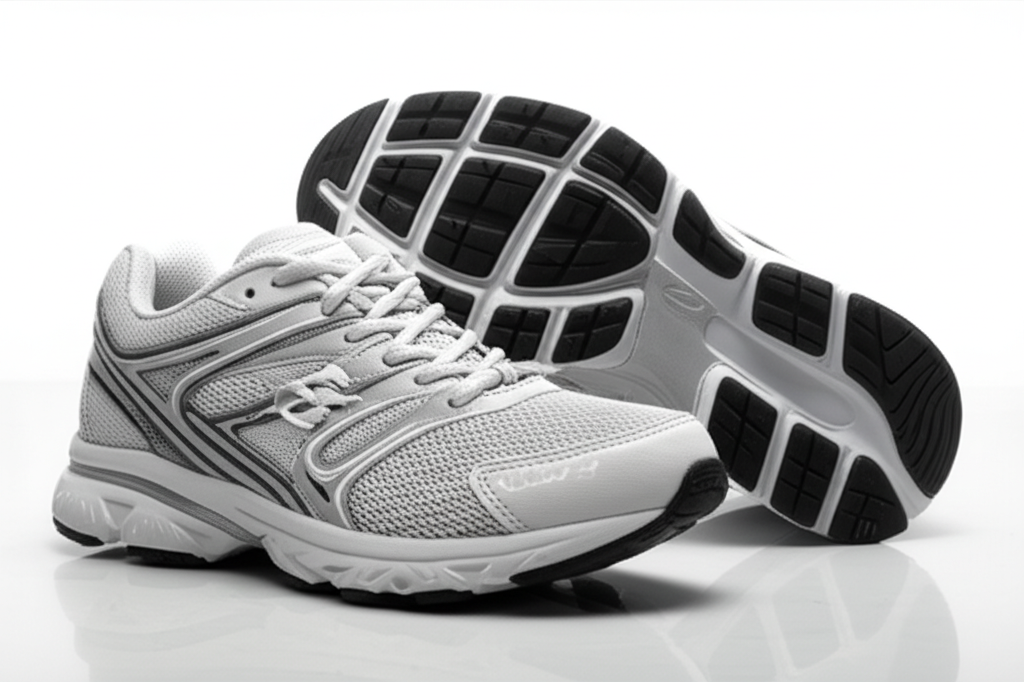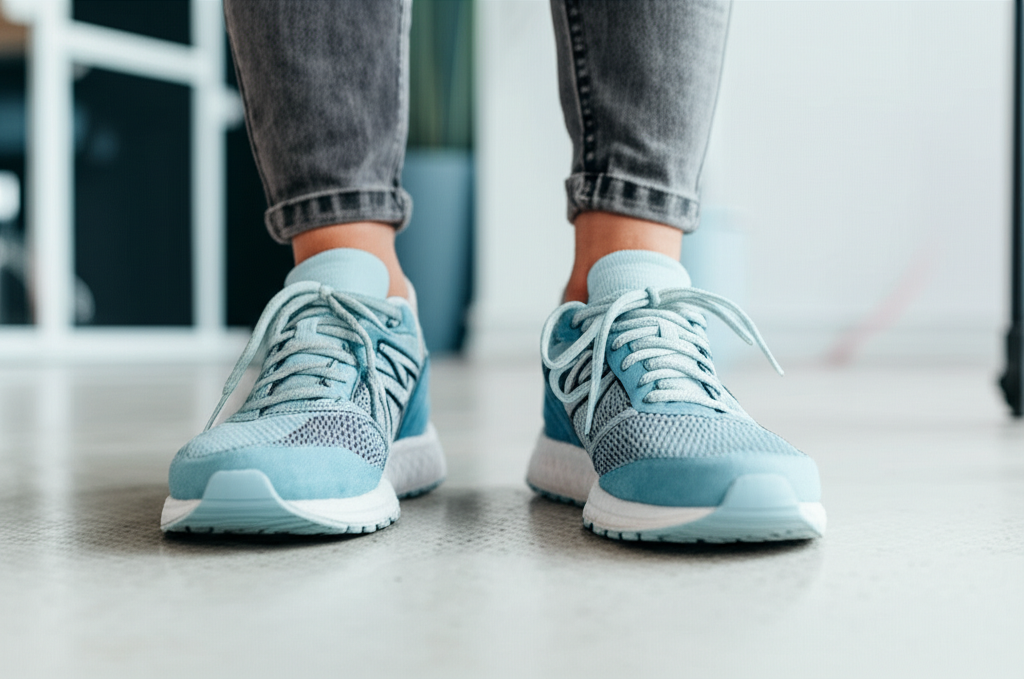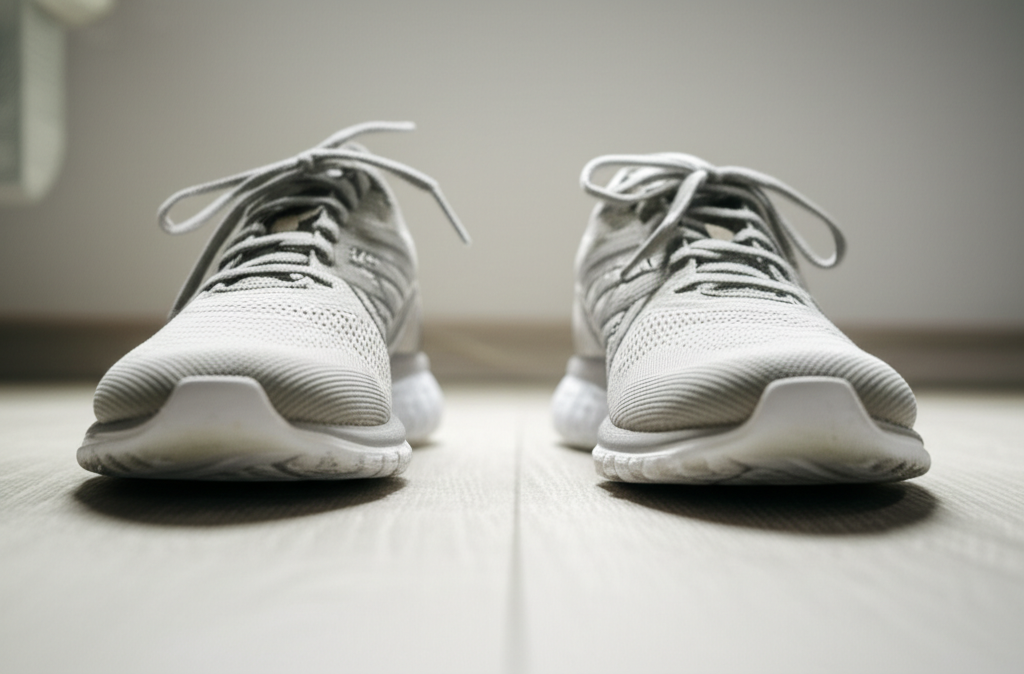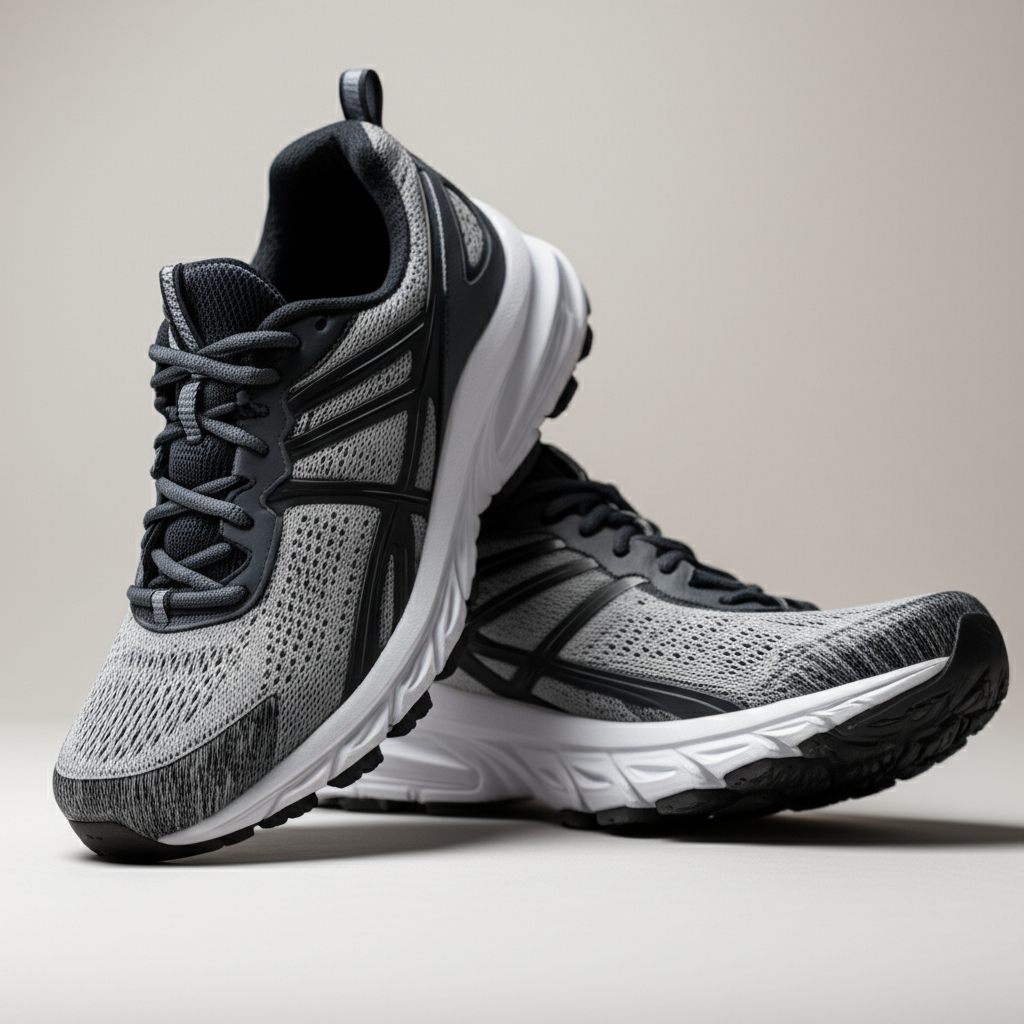Are Walking Shoes Good for Standing All Day? Uncover The Truth
Yes, many walking shoes are excellent for standing all day, offering crucial support and cushioning. However, the “best” shoe depends on specific features like arch support, sole flexibility, and overall comfort. This guide will help you choose the right walking shoes to make standing for extended periods much more comfortable.
Key Takeaways
- Choose walking shoes with excellent arch support.
- Look for ample cushioning to absorb impact.
- Ensure a breathable upper material for all-day comfort.
- Prioritize a wide toe box for foot splay.
- Test shoes for flexibility and grip.
- Consider your specific standing needs and surfaces.
Standing for long hours can be tough on your feet, legs, and even your back. You might be wondering if your trusty walking shoes are up to the task. It’s a common question because walking shoes are designed for movement, but what about stillness? Many people find themselves standing for work, errands, or hobbies and need footwear that can handle it. The truth is, not all walking shoes are created equal when it comes to prolonged standing. But don’t worry, understanding a few key features can make all the difference. We’ll break down exactly what to look for to ensure your feet stay happy, even after a long day on your feet.
Understanding the Demands of Standing All Day

When you stand for extended periods, your feet bear your entire body weight. This constant pressure can lead to a variety of issues if your footwear doesn’t provide adequate support. Unlike walking, where your feet move through a natural gait cycle, standing involves static loading. This means certain parts of your foot and leg muscles are under continuous strain. This can cause fatigue, pain, and over time, more serious conditions.
Think about it: during walking, your weight shifts from heel to toe, and your muscles engage and relax in a dynamic way. When standing still, your feet are essentially locked in one position, and the muscles work harder to maintain balance and support. This prolonged, static load can cause:
- Foot Fatigue: Muscles in your feet and ankles get tired from constantly supporting your weight.
- Arch Strain: The plantar fascia, a band of tissue running across the bottom of your foot, can become inflamed.
- Heel Pain: Conditions like plantar fasciitis are common.
- Leg and Back Discomfort: Poor foot support can affect your entire posture.
- Swelling: Blood circulation can be impaired, leading to swollen feet and ankles.
The right shoes can act as a buffer against these stresses. They help distribute your weight more evenly, absorb shock, and support your natural foot structure, making a significant difference in your comfort and overall well-being.
What Makes Walking Shoes Suitable for Standing?
Walking shoes are often a good starting point for standing comfort because they are generally designed with several key features that benefit prolonged wear. These shoes prioritize cushioning, support, and a comfortable fit. Let’s explore what makes them work:
1. Cushioning
This is perhaps the most critical element. Good walking shoes typically have ample cushioning in the midsole, the layer between the upper and the outsole. This cushioning absorbs the impact of your body weight with every tiny shift and micro-movement. Materials like EVA (ethylene-vinyl acetate) or polyurethane foam are common. For standing all day, you want cushioning that is responsive enough to provide comfort but also durable enough not to compress and lose its effectiveness quickly.
2. Arch Support
Your arches are the natural shock absorbers of your feet. When standing, maintaining proper arch alignment is crucial to prevent strain. Walking shoes often come with built-in arch support or have removable insoles that can be replaced with custom or over-the-counter orthotics. Whether you have high arches, flat feet, or neutral arches, adequate support helps distribute pressure evenly and prevents overpronation (rolling inward) or supination (rolling outward).
3. Midsole Stability
While walking shoes are designed to flex, they also need a stable midsole. This prevents excessive twisting or pronation, which can lead to fatigue and pain. A good midsole provides a solid foundation for your foot, especially important when standing still for long periods. Some walking shoes incorporate stability features like a shank (a rigid piece in the midfoot) or denser foam on the medial (inner) side to control motion.
4. Breathable Upper Materials
Your feet can get hot and sweaty when standing all day, even if you’re not moving much. Walking shoes often feature breathable mesh or knit uppers that allow air to circulate, helping to keep your feet cool and dry. This reduces the risk of blisters and discomfort.
5. Comfortable Fit and Room to Move
A good fit is paramount. Walking shoes are typically designed with a comfortable last (the mold a shoe is built around) that accommodates the natural shape of the foot. This often includes a slightly wider toe box than dress shoes, allowing your toes to splay naturally, which is important for balance and comfort during prolonged standing.
When Walking Shoes Might Not Be Enough

While walking shoes offer many benefits, they aren’t always the perfect solution for every standing scenario. Some walking shoes are designed for specific types of walking, like light jogging or trail walking, which might have different priorities than all-day standing comfort. Here’s when you might need to look beyond standard walking shoes:
1. Minimalist or Highly Flexible Walking Shoes
Some walking shoes are designed to be very lightweight and flexible, mimicking a barefoot feel. While great for some activities, they might lack the cushioning and support needed to protect your feet from the constant pressure of standing all day. If a shoe bends easily in the middle, it might not offer enough structural support for static standing.
2. Worn-Out Cushioning
Even the best walking shoes wear out. Over time, the cushioning in the midsole compresses and loses its shock-absorbing properties. If your current walking shoes feel flat or less supportive than they used to, they are likely no longer adequate for standing all day.
3. Lack of Specific Features for Your Needs
If you stand on hard, unforgiving surfaces (like concrete) for hours, you might need extra shock absorption. If you have specific foot conditions like flat feet or plantar fasciitis, standard walking shoes might not provide the targeted support you require. In these cases, specialized footwear or orthotics become essential.
4. Style Over Substance
Some fashion-oriented “walking shoes” prioritize aesthetics over performance. They might look the part but lack the deep cushioning, robust support, and comfortable fit needed for genuine all-day wear.
Key Features to Look for in Shoes for Standing All Day
When selecting footwear specifically for standing for long hours, focus on these crucial features. These elements will directly impact your comfort and foot health.
1. Superior Cushioning
Look for shoes with thick, responsive midsoles. Materials like advanced foams (e.g., Boost, React, Fresh Foam) or gel inserts can provide excellent shock absorption. The goal is to cushion your feet from the hard surfaces you stand on.
2. Excellent Arch Support
This is non-negotiable. Your shoes should support your natural arch. If you have flat feet, you’ll need shoes with significant support to prevent overpronation. If you have high arches, you might need shoes with more cushioning and a neutral support system. Some shoes are designed with a “motion control” feature for severe overpronation, while others offer “neutral” support for those with well-aligned feet.
3. Stable Heel Counter
The heel counter is the rigid cup at the back of the shoe that cradles your heel. A firm heel counter helps stabilize your foot, prevents slippage, and reduces stress on your Achilles tendon and ankle. It should feel secure but not constricting.
4. Wide Toe Box
Your toes should have room to spread out naturally. A narrow toe box can lead to bunions, hammertoes, and general discomfort, especially when your feet swell slightly from standing. Look for shoes that are anatomically shaped or explicitly state they have a wide toe box.
5. Flexible Forefoot
While the midfoot and heel should be stable, the shoe should have some flexibility in the forefoot (the part behind your toes). This allows your foot to bend naturally as you shift your weight, even when standing. You should be able to bend the shoe at the ball of your foot.
6. Breathable and Padded Upper
A padded collar and tongue can prevent irritation and add comfort. The upper material should be breathable to manage moisture and temperature. Mesh, knit, or well-perforated leather are good choices.
7. Durable Outsole with Good Traction
The outsole provides grip and durability. Look for rubber outsoles that are wear-resistant and offer good traction to prevent slips. The pattern of the outsole can also contribute to shock absorption.
Comparing Shoe Types for Standing Comfort

Not all shoes are created equal. Let’s compare how different types of footwear stack up when it comes to standing all day.
| Shoe Type | Cushioning | Arch Support | Stability | Breathability | Toe Box Room | Best For Standing? |
|---|---|---|---|---|---|---|
| Walking Shoes | Good to Excellent | Good to Excellent | Good | Good to Excellent | Good | Yes, often ideal. |
| Running Shoes | Excellent | Variable (can be too much or too little) | Variable (some are very unstable) | Excellent | Good | Potentially, but choose wisely. |
| Athletic/Training Shoes | Moderate | Moderate | Good | Good | Moderate | Okay for shorter periods. |
| Work Boots (Comfort-focused) | Moderate to Good | Moderate | Excellent | Moderate | Moderate | Yes, especially on rough surfaces. |
| Casual Sneakers | Poor to Moderate | Poor to Moderate | Poor | Moderate | Moderate | No, not for prolonged standing. |
| Dress Shoes/Flats | Poor | Poor | Poor | Poor | Poor | Definitely not. |
As you can see, dedicated walking shoes often strike a good balance. Running shoes can offer excellent cushioning but might be too flexible or unstable for static standing. Work boots can provide robust support and durability, which is beneficial on tough job sites. Casual sneakers and dress shoes generally fall short on the essential features needed for extended standing.
Pro Tips for Maximizing Foot Comfort While Standing
Beyond choosing the right shoes, incorporating these tips can significantly enhance your comfort when standing for long hours.
Pro Tip: Invest in high-quality socks made from moisture-wicking materials like merino wool or synthetic blends. Avoid cotton, which holds moisture and can lead to blisters and discomfort.
1. Consider Orthotics or Insoles
Even the best shoes might benefit from an added layer of support. Over-the-counter insoles or custom orthotics can provide targeted cushioning and arch support tailored to your specific foot needs. Brands like Superfeet, Powerstep, or Currex offer excellent options.
2. Alternate Your Footwear
If possible, switch between two pairs of supportive shoes throughout the day or week. This allows the cushioning to decompress and prevents one area of your foot from being under constant pressure.
3. Practice Good Posture
How you stand matters. Avoid locking your knees, and keep your weight balanced. Engage your core slightly to support your spine. Good posture reduces strain on your feet, legs, and back.
4. Take Micro-Breaks
If your job allows, take short breaks every hour or so to shift your weight, stretch your calves, or even sit down for a minute. These small interruptions can prevent fatigue from building up.
5. Elevate Your Feet When Possible
When you do get a chance to rest, elevate your feet. This helps improve circulation and reduce swelling. Even propping your feet up on a low stool or footrest during breaks can make a difference.
6. Stay Hydrated
Dehydration can contribute to muscle cramps and fatigue. Drinking enough water throughout the day is important for overall bodily function, including muscle and joint health.
Choosing the Right Walking Shoes for Your Standing Needs: A Step-by-Step Guide
Ready to find the perfect pair? Follow these steps to ensure you choose walking shoes that will keep you comfortable all day long.
- Assess Your Standing Environment: Where do you stand most? Is it a hard floor like concrete or tile? Is it a slightly softer surface like carpet? Do you walk a bit between standing periods? This will help determine how much cushioning and stability you need. For hard surfaces, prioritize shock absorption.
- Understand Your Foot Type: Do you have high arches, flat feet, or a neutral arch? Observing the wear pattern on your old shoes can help. If the inside edge is heavily worn, you might overpronate (flat feet). If the outside edge is worn, you might supinate (high arches). A podiatrist can provide a professional assessment.
- Prioritize Key Features: Based on your environment and foot type, focus on shoes that offer:
- Generous cushioning (especially in the heel and forefoot).
- Robust arch support that matches your foot type.
- A stable heel counter.
- A wide, rounded toe box.
- Breathable upper materials.
- Try Them On (Properly!):
- Shop later in the day: Your feet swell throughout the day, so trying on shoes in the afternoon or evening gives you a more accurate fit.
- Wear your usual socks: Bring the type of socks you typically wear to ensure the fit is right.
- Check the length: There should be about a thumb’s width of space between your longest toe and the end of the shoe.
- Check the width: Your foot should feel snug but not squeezed. You should be able to wiggle your toes.
- Walk around: Don’t just stand. Walk around the store, go up and down stairs if possible. Pay attention to any pressure points or rubbing.
- Test flexibility: The shoe should bend naturally at the ball of your foot. It shouldn’t feel stiff or too floppy in the middle.
- Read Reviews: Look for reviews from people who also stand for long hours. Many shoe review sites allow filtering by user activity or profession.
- Don’t Be Afraid to Invest: While it might seem like a higher cost upfront, investing in a quality pair of shoes designed for standing will save you pain, discomfort, and potential medical expenses down the line. Reputable brands known for comfort and support include Hoka, Brooks, New Balance, Asics, and Saucony, though specific models within these brands will vary. For work-specific needs, brands like Dansko or Skechers Work might be worth exploring. You can also find valuable resources on foot health from organizations like the American Podiatric Medical Association (apma.org).
FAQ: Your Top Questions About Standing Shoes Answered
Q1: Can I wear my running shoes for standing all day?
Sometimes, yes. Running shoes often have excellent cushioning, which is great for standing. However, some running shoes are designed for maximum flexibility or motion control, which might not be ideal for static standing. If your running shoes feel supportive and comfortable when standing, they can work, but dedicated walking or standing shoes might offer better long-term support.
Q2: How often should I replace shoes if I stand all day?
If you stand for long hours daily, you’ll wear out your shoes faster. A general guideline is to replace athletic or walking shoes every 300-500 miles of walking, but for standing, it’s more about the cushioning degrading. If you notice reduced comfort, less support, or visible wear, it’s time for a new pair. This could be anywhere from 6 months to a year, depending on the shoe’s quality and your usage.
Q3: What are the best brands for shoes for standing all day?
Several brands are known for comfort and support. For walking and everyday comfort, consider Hoka, Brooks, New Balance, Asics, and Saucony. For jobs requiring standing, brands like Dansko, Alegria, or specific work lines from Skechers might offer durable, supportive options. Always try them on to ensure they fit your specific feet.
Q4: Do I need special shoes if I stand on concrete all day?
Yes, standing on concrete is particularly hard on your feet. You’ll want shoes with exceptional cushioning and shock absorption to mitigate the impact. Look for shoes with thick, high-rebound midsoles and good overall support. Brands like Hoka are often recommended for their plush cushioning.
Q5: How can I tell if my shoes have enough arch support?
Your arch should feel comfortably supported, not strained or unsupported. If you have flat feet, you might feel your foot rolling inward too much without proper support. If you have high arches, you might feel pressure points if the shoe doesn’t have enough cushioning or a neutral design. A good test is to hold the shoe and try to twist it; it should resist twisting significantly in the midfoot. It should bend easily at the toe.
Q6: Is it better to stand on a mat or wear supportive shoes?
Both are beneficial! Supportive shoes are your first line of defense. Anti-fatigue mats provide an additional layer of cushioning and can encourage subtle movements, improving circulation. For the best results, use both supportive footwear and an anti-fatigue mat if your environment allows.
Conclusion
Choosing the right footwear is a vital step in ensuring comfort and health when standing for extended periods. While many walking shoes can be an excellent choice, understanding the specific features—like superior cushioning, robust arch support, a stable heel, and a roomy toe box—is key to making an informed decision. By prioritizing these elements and following a thoughtful selection process, you can find shoes that support your feet, reduce fatigue, and allow you to get through your day with greater ease and comfort. Don’t underestimate the power of good shoes; they are an investment in your well-being.

